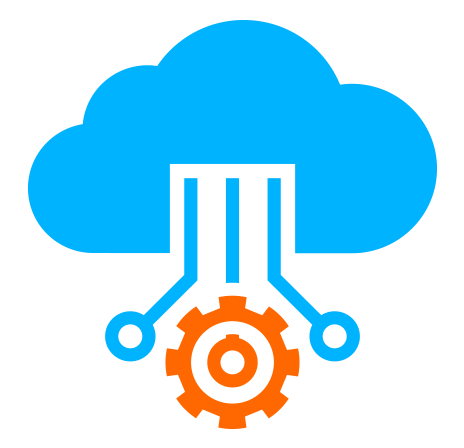 Server
Colocation
Server
Colocation
 CDN
Network
CDN
Network
 Linux Cloud
Hosting
Linux Cloud
Hosting
 VMware Public
Cloud
VMware Public
Cloud
 Multi-Cloud
Hosting
Multi-Cloud
Hosting
 Cloud
Server Hosting
Cloud
Server Hosting
 Kubernetes
Kubernetes
 API Gateway
API Gateway

The cloud computing revolution in India has accelerated rapidly, with serverless computing standing out as one of the most transformative technologies. As businesses race to innovate, scale faster, and reduce costs, serverless architectures are becoming the go-to solution for developers and enterprises alike.
This article explores the top serverless use cases across various industries in India, along with real-world success stories of organizations that have adopted serverless technology to achieve agility, resilience, and digital transformation.
Serverless computing is a cloud-native architecture where developers can build and deploy applications without managing any servers. The cloud provider automatically handles infrastructure management, scaling, and maintenance — allowing developers to focus solely on writing and improving code.
This “hands-off” approach is what makes serverless ideal for the modern digital era. It enables organizations to launch new products faster, handle unpredictable traffic, and optimize operational costs.
Some of the key benefits driving serverless adoption include:
- Scalability on demand without manual provisioning
- Pay-as-you-go pricing models that reduce idle costs
- Event-driven architecture for real-time data processing
- Simplified operations with no server management overhead
1. E-Commerce and Retail Automation
The Indian e-commerce market, led by companies like Flipkart, Meesho, and Nykaa, depends heavily on high-performance, scalable infrastructure. Serverless computing allows these businesses to manage massive traffic surges during flash sales or festive seasons.
Use Case Example:
An e-commerce platform can use serverless functions to process orders, update inventory, and send notifications instantly. During peak hours, the infrastructure scales automatically to handle thousands of transactions per second — without downtime or manual intervention.
Success Story:
An emerging Indian D2C brand migrated its cart and order processing system to a serverless architecture on Cyfuture Cloud. The result? 50% reduction in hosting costs and 99.99% uptime during high-traffic events like Diwali sales.
2. FinTech: Real-Time Transactions and Fraud Detection
FinTech is one of the fastest-growing sectors in India, and real-time financial transactions require systems that are both fast and secure. Serverless computing enables instant scalability and efficient processing of millions of micro-transactions.
Use Case Example:
A digital payment app can deploy serverless functions to verify user identity, check account balances, and detect fraud patterns in real time.
Success Story:
A major Indian payment gateway leveraged serverless architecture to handle dynamic transaction loads. With serverless triggers, it processed over 10 million transactions daily — while reducing infrastructure costs by 40%.
3. Healthcare and Telemedicine
The healthcare sector in India has been rapidly adopting digital technologies post-pandemic. Serverless computing supports telemedicine applications by providing reliable back-end services and handling large-scale patient data efficiently.
Use Case Example:
A telemedicine platform can use serverless APIs to store patient data securely, run analytics on symptoms, and schedule virtual consultations automatically.
Success Story:
A Bengaluru-based health-tech startup implemented serverless APIs on Cyfuture Cloud, enabling it to serve over 2 lakh patients monthly with zero downtime. The automation of data entry and processing reduced manual work by 60%.
4. EdTech: Real-Time Learning and Content Delivery
India’s booming EdTech industry relies on dynamic, scalable platforms that deliver real-time classes and interactive content. Serverless computing ensures seamless performance even when thousands of students access a course simultaneously.
Use Case Example:
An online learning app can use serverless architecture to manage live video sessions, student interactions, and personalized content recommendations.
Success Story:
An EdTech company adopted Cyfuture Cloud’s serverless solutions to handle exam hosting and live quizzes. It scaled automatically during peak exam sessions, reducing latency by 35% and improving the student experience significantly.
5. Media and Entertainment: Streaming and Content Delivery
OTT platforms, gaming apps, and streaming services are using serverless computing for real-time data processing, recommendations, and analytics.
Use Case Example:
A streaming app can use serverless functions to encode videos, track viewer activity, and suggest personalized content in real time.
Success Story:
A regional OTT provider in India integrated serverless microservices for user tracking and ad personalization. With this shift, their engagement rate increased by 27% while operational costs dropped notably.
6. Logistics and Supply Chain Optimization
Serverless computing is also revolutionizing logistics and transportation by enabling smarter, data-driven supply chains.
Use Case Example:
A logistics platform can process millions of tracking events, optimize delivery routes, and generate automated updates using event-driven serverless functions.
Success Story:
An Indian logistics startup built its shipment tracking system using Cyfuture Cloud’s serverless event functions. The system now handles real-time data from 100,000+ shipments daily, providing instant updates with zero lag.
7. AI and Data Analytics
Serverless computing supports AI and ML workflows by enabling on-demand data processing and model training without constant infrastructure management.
Use Case Example:
An analytics platform can run serverless functions to clean and process large datasets before feeding them into ML models.
Success Story:
A Pune-based AI firm used serverless cloud services to preprocess training data and deploy ML models for clients. This reduced project delivery times by 40% and improved accuracy with automated scaling.
8. Government and Public Sector Digitization
As part of Digital India, government institutions are adopting cloud-based and serverless frameworks to enhance citizen services.
Use Case Example:
A state government department can use serverless APIs to manage public records, handle citizen queries, and automate document verification.
Success Story:
A public sector IT department implemented a serverless citizen portal using Cyfuture Cloud, leading to 3x faster response times and significant savings on IT infrastructure.
9. Startups and SMEs: Fast Innovation, Low Costs
For startups and SMEs, serverless technology provides an entry point to enterprise-grade scalability without heavy investment.
Use Case Example:
Startups can launch MVPs quickly, testing their products in real-time environments without worrying about server provisioning.
Success Story:
A SaaS startup launched its AI-powered CRM tool using a serverless-first approach with Cyfuture Cloud. It reduced time-to-market from 6 months to 3 weeks — proving that innovation can happen fast and affordably.
Serverless computing is no longer a futuristic concept — it’s a practical, proven technology that’s already transforming Indian industries. From FinTech and healthcare to education and logistics, the benefits of agility, scalability, and efficiency are undeniable.
As India continues to embrace digital-first operations, serverless architectures will become the foundation of future innovation.
If you’re a developer, CTO, or enterprise leader looking to modernize your IT infrastructure, explore Cyfuture Cloud’s Serverless Solutions. With secure Indian data centers, automated scaling, and enterprise-grade reliability, Cyfuture Cloud empowers businesses to innovate faster, scale smarter, and save more.
Accelerate your digital transformation journey today — with Cyfuture Cloud’s next-gen serverless computing.

Let’s talk about the future, and make it happen!
By continuing to use and navigate this website, you are agreeing to the use of cookies.
Find out more


